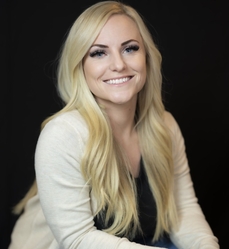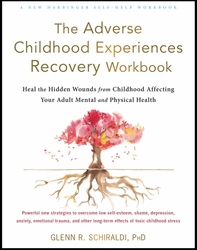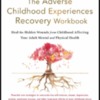Glenn R. Schiraldi, Ph.D. Psychology Today blog post, March 27, 2023
This post is part of a series on adverse childhood experiences. Read the other parts here.
She’d been a straight-A student who loved learning; a popular gymnast, cheerleader, and student council member. She’d dreamed of giving her future children a beautiful childhood, being a mother they could look up to, loving people, and impacting the world for good.
But now she stood before a judge to be sentenced for 15 drug-related felonies that would send her to prison for many years. How did it all go wrong? In her recently published autobiography, Inspired to Recover, Malory Ruesch describes the anatomy of her free-fall into addiction and crime with rare insights and clarity, providing perspectives that can help us better understand drug addiction and the path to recovery.
The Demons from Childhood Adversities
Despite her outward successes, a number of unresolved adverse childhood experiences (ACEs) created vulnerabilities for Malory. Mal was raised by a loving single mother who struggled with alcoholism.
On two occasions, at age 6 and 13, Mal was separated from her mother while she was recovering. During the second separation, Mal moved in with her “normal” aunt and uncle, and had to change schools. She felt shame and fear of being judged for her mother’s condition, so she’d never invited friends to her home.
Her mother was Mal’s best friend, brave and hard working. But her mother had struck her when drunk, and was unable to protect her from a man who stripped her of her innocence when Mal was 6. Mal wondered why her love for her mother wasn’t enough to keep her from drinking.
All her life Mal had longed for a father, but hers never called or visited, and never cared to know who she was. Mal wondered what was so wrong with her that her father didn’t want her; why he left and never came to see her. These childhood adversities left her feeling insecure, questioning her value, and dependent on the acceptance of others.
Betrayal
At age 16, Mal moved back with her mother. Life seemed stable and good. She’d had a three-year relationship with an aspiring engineering student who seemed trustworthy and kind. They’d planned their life together.
But when happily bringing over a scrapbook of their relationship, she discovered him cheating. Heartbroken, she wondered what was wrong with her and why she always came up short in love. Looking in the mirror she saw not her natural beauty but her inadequacy and sense of abandonment.
Hoping to cheer Mal up, her friends took her out to a karaoke bar. There she met a tall, handsome, charming man, seven years older, who bought her first drinks. Under the influence of alcohol, she felt beautiful, valued, and accepted. He seemed to care and protect her, so she trusted him as he gradually led her down the path from drinking to marijuana and ultimately a range of hard drugs and drug-related crimes.
The euphoria from romance and drugs seemed to dull her painful lack of self-worth and distracted her from dealing with the emptiness she felt inside. She was unsure if anything within her was worth loving. Her grades in school had defined her worth, but now her grades were slipping. Then she caught him cheating—betrayed again. But by now she was addicted to the drugs that kept her from being alone with her own worthless company—drugs that gave her a way to cope when she lacked the skills to cope with her pain.
By age 20, she had failed all court-mandated attempts at rehabilitation. She felt that her heart was made to love. But her need to be valued and validated by the opposite sex had driven her decisions. The drugs numbed her logic, filling her empty soul and burying all regret. As her self-hatred grew, she thought that the world would be better off without her. Who could love someone so broken?
Redemption
As she was about to be sentenced to many years in prison, a probation officer named Chuck burst into the courtroom. He convinced the judge to give him one more chance with Mal.
Chuck sternly challenged Mal to want to live and get clean. He required that she call him every night. Though firm, he conveyed that he was on her side. His voice spoke tenderness, speaking to the little girl in her. In their chats, he asked about her childhood and deepest fear, and cheered her on. He gained her trust, becoming the loving father figure she had always wanted.
At one point she asked why he was fighting for her. He said because he disbelieved the previous therapists’ opinions that she was hopeless. He saw something in her no one in the court system had. Mal reasoned that if he was willing to do so much for her, then she would trust him and give him everything she had left in her, hoping that she would see herself as he did.
She found a loving therapy group leader and Narcotics Anonymous sponsor who, like Chuck, inspired her to recover. When Mal was clean for 90 days, her mother relapsed again. As Mal cried, Chuck told her that love is the most beautiful pain a human can experience, especially the love between a mother and daughter. He encouraged her to guide her to recovery using the strengths she was gaining.
When looking for a place to live to create space from her mom to overcome her codependence, Mal chanced upon a landlord named Wesley whom she’d met at a party years ago, the only one who was not drinking or using drugs. Chuck told Wesley that Mal was unavailable and told Mal to focus on developing a love for herself. Chuck assured her that she would one day find a man who loves her as he loves his own wife.
Gradually, a deep friendship developed between Mal and Wesley, who’d never struggled with addiction. Over time he invited Mal to family gatherings. He attended group therapy weekly with Mal to learn how to support her. Mal began to understand the difference between codependency and love, and learned to set boundaries with her mom.
Throughout this time, Chuck gave her fatherly advice and encouragement. In her recovery group Mal learned to address the pain she felt about her father’s absence and how that created beliefs that destroyed her feelings of self-worth. She came to forgive her father.
Mal was becoming happier with who she was becoming, no longer taking responsibility for her parents’ inner battles. Chuck had loved her until she was strong enough to love herself. She came to believe that pain doesn’t last forever; that there’s a way out of any darkness. Chuck also engineered a miracle, clearing her record so that she could earn a healthcare degree and pursue her dream job.
The friendship between Mal and Wesley grew into a healthy, lasting love in which Mal was known for who she really was. Before Chuck died of cancer, he reminded Mal that she was never a lost cause, and asked her to promise that she’d tell her story.
Takeaways from Mal’s Journey
Genuine caring from key figures, coupled with firm limits, activated Mal’s resolve to recover and again pursue her dreams. She learned to distinguish mature love from codependency and manipulation. Over time Mal learned to love herself. and that enabled her to better love others. Today Mal and Wesley are raising two daughters. She shares her story wherever possible, inspiring others to believe that there is always hope, always the possibility of learning to love self and create a meaningful life.
Malory Ruesch, author of Inspired to Recover (photo courtesy of Malory Ruesch)
Resource: Contact Malory at www.Rueschrecovery.com
References
Ruesch, M. (2022). Inspired to Recover: An Addicts Journey Through Addiction and Healing. St. George, UT: Synergy Books.
Schiraldi, G. R. (2021). The Adverse Childhood Experiences Recovery Workbook: Heal the Hidden Wounds from Childhood Affecting Your Adult Mental and Physical Health. Oakland, CA: New Harbinger Publications.
About the Author
Glenn R. Schiraldi, PhD, has served on the stress management faculties at The Pentagon, the International Critical Incident Stress Foundation, and the University of Maryland, where he received the Outstanding Teacher Award in addition to other teaching/service awards. His fourteen books on stress-related topics have been translated into seventeen languages, and include The Adverse Childhood Experiences Recovery Workbook, The Self-Esteem Workbook. The Resilience Workbook, and The Post-Traumatic Stress Disorder Sourcebook. The founder of Resilience Training International (www.ResilienceFirst.com), he has trained laypersons, emergency responders, and clinicians around the world on the diverse aspects of stress, trauma, and resilience.
Title Image photo credit: Andranik Hakobyan/istockphoto







Comments (0)